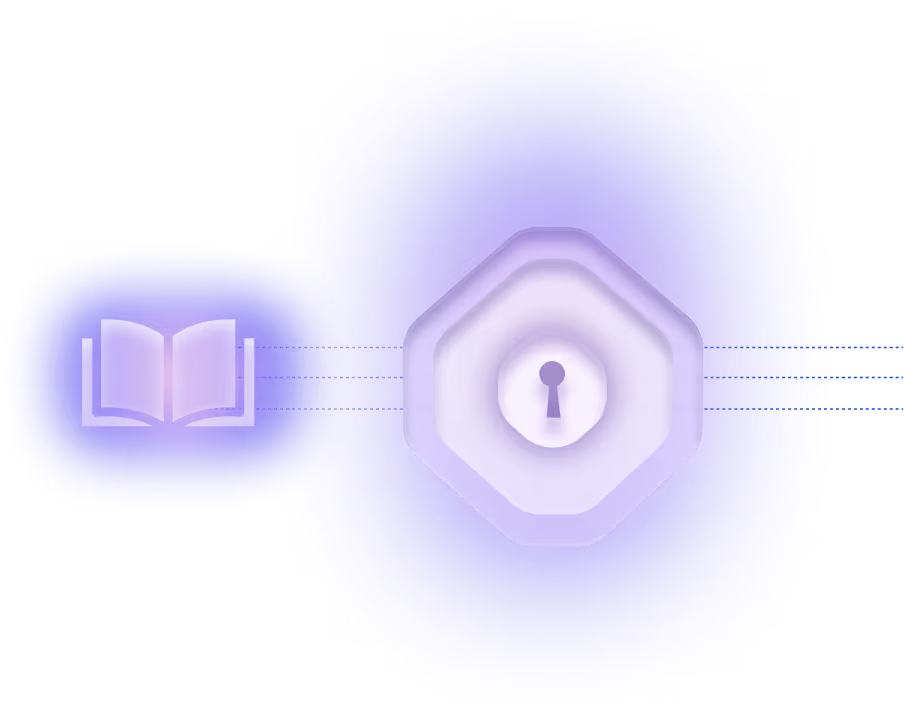Vault

What is Vault?
In cybersecurity, a Vault refers to a centralized system for managing, securing, and controlling access to sensitive information such as secrets, tokens, credentials, and encryption keys. One of the most prominent implementations is HashiCorp Vault, an identity-based secrets management platform designed to handle dynamic credential provisioning, policy enforcement, and secure storage of cryptographic materials. Vault plays a particularly critical role in securing Non-Human Identities (NHIs)—such as service accounts, API keys, and automated workloads—across hybrid and multi-cloud environments.
Why is it important?
Vault addresses a fundamental security challenge in modern infrastructures: the secure management and dynamic lifecycle control of secrets used by NHIs. Unlike human users, NHIs typically lack interactive authentication mechanisms, making them reliant on static credentials—an inherently risky approach. Vault mitigates this by issuing ephemeral, just-in-time credentials that automatically expire, enforcing the principle of least privilege and reducing the attack surface. It also supports hardware-backed encryption, audit logging, and fine-grained, role-based access control, making it indispensable for organizations seeking to prevent secret sprawl, privilege escalation, and credential leakage.
What are common applications or use cases?
In practice, Vault is used to securely deliver dynamic database credentials to application services, inject short-lived secrets into Kubernetes pods, and manage TLS certificates for machine-to-machine communication. For example, a CI/CD pipeline can authenticate to Vault, retrieve a temporary GitHub token scoped to a specific repository, and automatically revoke it after use. Vault also integrates with cloud provider IAM systems and supports automated secret rotation, making it integral to DevSecOps workflows and compliance with frameworks like SOC 2, HIPAA, and PCI DSS.
What is the connection to NHIs (Non-Human Identities)?
Vault is purpose-built to manage the security lifecycle of NHIs. It authenticates machine identities using cloud metadata services, Kubernetes service accounts, or workload identity federation, mapping each to a unique entity and enforcing access policies accordingly. This enables context-aware secret provisioning and ensures that each NHI receives only the credentials it needs, for the duration it needs them. Vault also tracks NHI activity through robust audit logs and integrates with SIEM platforms for anomaly detection and incident response.
Are there any notable industry data, trends, or standards?
Industry data indicates that NHIs now outnumber human users by more than 10:1 in enterprise environments, with 68% of cloud breaches involving misused machine credentials. Vault’s capabilities align with emerging standards such as the NIST Cybersecurity Framework 2.0, which emphasizes workload identity governance, and CISA’s push for software attestation and zero trust architectures. Vault’s support for post-quantum cryptography and integration with AI-driven policy engines signal its readiness for next-generation security demands.
What is the broader impact or takeaway?
Vault transforms the way organizations manage secrets and machine identities by shifting from static, manual credential handling to automated, policy-driven security. When implemented effectively, it enhances visibility, enforces least privilege, reduces operational risk, and supports compliance across distributed environments. As enterprises scale their use of NHIs across cloud, on-prem, and edge systems, Vault serves as a foundational component in securing the modern identity fabric—empowering security, IAM, and DevOps teams to operate with confidence and control.





